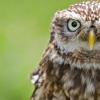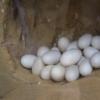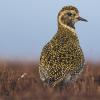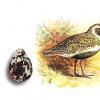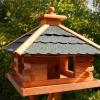Agios nikolaos crete history of the lake. Open the left menu of agios nikolaos. What to see and do in Agios Nikolaos
TOURIST ANSWERS:
Agios Nikolaos is an international cosmopolitan resort on the island of Crete. A very picturesque city, where it's great not only to come for a beach holiday, but also to see the local oldest sights.
The promenade of Agios Nikolaos
This long promenade is a picturesque and lively place in the city. The embankment is replete with restaurants, clubs, shops, street musicians perform here all day long, festivals are held here.
Sculpture "Cornucopia"

This is a completely new monument, which was erected here in 2012. The statue resembles a large horn, and the statue is made of metal and green glass. This sculpture appeared here not by chance. In Greek mythology, there is a legend that the mother of Zeus was worried that the god Kron, the father of Zeus, would decide to kill his own son, who could claim power and who could easily overthrow his father from the throne. To avoid tragedy, Zeus' mother decided to hide the young Zeus with the nymphs. Those were instructed to look after him, and the goat Amalthea, who lived in Crete, fed the god with milk. When the goat died of old age, Zeus's mother kept her horn as a token of respect and gratitude. It is said that it can be found somewhere in the mountains of the island. In the meantime, the horn is being searched for, the architects Sotiriadis brothers created a copy of it, which they put on public display.
How to find: near the port of the city on the shores of the Gulf of Mirabello
Church of St. Nicholas

This is a small cathedral on a hill in the north of the city and a prime example of early Byzantine architecture. Actually, thanks to this basilica, the city got its name. The church was built in the 8th century, during the period of Arab influence on architecture and art. These trends can be seen both in the interior and exterior decoration of the church. Inside the temple, elements of non-canonical painting have been preserved on the walls. The church is especially visited on December 6, when the country celebrates the day of St. Nicholas, the patron saint of Agios Nikolaos.
The address: Konstantinou Paleologou 41
Cretan olive oil farm


On this farm, you can learn about all the secrets and technologies of making Cretan olive oil. Here you can see an old press (over 130 years old), massive clay pots that can hold up to 200 kg of olives. In addition to oil, the same farm produces wine and a local drink called rakia. You can also learn about the production process of these alcoholic beverages here. And also interesting is the hall for the production of pottery, the great pride of the island from time immemorial. Of course, on the farm you can buy all the products of interest. The farm is located in the Havania area, 4 km north along the coast from the center of Agios Nikolaos.
Sculpture "The Abduction of Europe"

The sculpture was installed here recently, about 2 years ago. I guess everyone has heard about the legend of Europe. But I'll tell you again. Europa, the daughter of the Phoenician king Agenor, was a girl of incredible beauty, and the god Zeus fell in love with her without memory. He appeared to a girl who was walking on the sea coast, in the form of a bull. The girls began to decorate the horns of the animal with flower wreaths, and then Europe jumped on the back of the bull-Zeus, who immediately rushed into the sea and took the beauty to Crete, where they got married and Europe gave birth to Zeus three sons-heroes. So, the statue represents this very legend: a girl sits on a powerful bull, holding in her hand the caduceus of Hermes or the rod of heralds, as it is also called, an object that opens the limit between light and darkness, death and life, evil and good. The ten-meter statue is made of concrete and sits on a base of gray stone. By the way, the statue was created by the Greek director Nikos Koundouros. It turned out professional!
The address: Port of Agios Nikolaos
Cave of Milatos

This cave is located near the village of Milatos, 25 km from the city. The beauty of the cave is in its natural formations, stalactites and stalagmites. True, there are not very many of them, but, nevertheless, the cave is extremely beautiful. Openings in the front of the cave form a kind of window and door. The cave is quite deep, at 75 meters, the width is about 45 meters, and the deepest point is 12 meters below the entrance. It is interesting that traces of an ancient altar and burial were found in the depths of the cave, which means that rituals were once held here. Also, the cave is known for its tragic events. In 1823, the Turkish general Hasan Pasha attacked and sacked the Greek settlements on the Lassithi plateau and then went to the Mirabello area for further profit. Local residents, having heard about the upcoming looting, hid in the nearest caves. One of the inhabitants reported to Hassan Pasha about this shelter, and soldiers were immediately sent there, who forced people out of the caves. Of course, the Greeks fought, but the forces were unequal - 150 Greeks to 5,000 Turks. The caves were shelled for several days, and then the entrance to the cave was set on fire, and the Cretans had to leave. The women were sent to the general's harem, the old men were trampled to death by horses, some were beheaded, babies were killed, 18 people were burned alive, and before the massacre they were cut off three fingers with which they were baptized. As a result, about 1000 people were injured. After this horror, a small church was erected in the cave in 1935 in memory of the Greek New Martyrs with the bones of the dead. Every year on St. Thomas Day, a memorial service is held here for the residents who fought for their lives. 
Monument to Roussos Kunduros

The monument is dedicated to the outstanding politician of the city, one of the leaders of the resistance, who died at the hands of the German fascists in 1944. The full-length sculpture of the politician attracts many tourists, and local residents regularly place fresh flowers at the base of the monument as a sign of respect and reverence for the national hero.
The address: 28is Oktovriou 24-4
Folklore Museum


This museum was opened about 10 years ago, and the collections of the museum are constantly growing and replenishing. Looking through the exhibits of the museum, you can get a fairly complete impression of how the Greeks lived in different periods - there are national costumes, dishes, photographs, paintings, and household items. The museum building is just as beautiful. The museum is located on the right side at the beginning of the city pier. A monument to the lawyer Iosif Kundurus was erected next to the museum.
The address: Konstantinou Paleologou, 4
Helpful answer?
Agios (or Agios) - Nikolaos is a small city on the island of Crete, which is the capital of one of its regions. It is located in the northern part of the island.
First of all, Agios Nikolaos attracts tourists with the cleanest sea and magnificent beaches. However, some travelers are concerned about the question - what can you see in a particular place? Wouldn't it have to be limited to just a beach holiday?
I will immediately assure everyone who asked this question - Agios Nikolaos is just the place where you can not only lie on the sand, but also get acquainted with the culture of Crete and discover new sights.
First of all, some museums are located directly in the city, so you don't even have to go anywhere, secondly, other interestingplaces are located near this area so that Agios Nikolaos will be a convenient starting point for your trips.
I'll start, perhaps, with the sights located right in the city.
Old city
First of all, everyone who loves old streets and would like to enjoy walks among old houses should take a walk through the Old Town. It is not very big, but quite pleasant.
Agios - Nikolaos is located in a mountainous area, therefore, walking around the Old Town, you will constantly have to go up or down - therefore, the elderly, children, as well as not very hardy people should be careful and not overestimate their strength. In general, there are an incredible number of stairs in the Old Town - some of them were even designed by famous architects.
Lake Voulismeni
One of the unique attractions that you will not find in other resorts is the freshwater lake, which is located in the city. It is connected to the sea by a canal, but, oddly enough, the water does not mix and the water in the lake continues to be fresh.
I would advise those who like beautiful views and walks to take a walk along the embankment of the lake.

Ethnographical museum
Those who love museums and those who are interested in foreign cultures should recommend the Ethnographic Museum. There you can see the national clothes of the Cretans and the tools they used in agriculture. In addition, in the museum you will admire the old black and white photographs of the city and will be able to understand how it looked before.
Useful information for tourists
The address
Odos Paleologou, 2
The museum is open to visitors from Tuesday to Sunday from 9:00 to 14:00, the entrance ticket will cost you three euros.
Archaeological Museum
Those who are fond of history and excavations can be advised to visit the Archaeological Museum, especially since it houses one of the largest collections of archaeological treasures found in Crete. The exhibits located in the museum belong to a variety of periods - from the Neolithic to the late Roman.

The most interesting exhibits are funeral gifts, a vessel in the form of a bird, as well as a skull with a golden olive wreath, which, by the way, was found near Agios Nikolaos. An interesting fact is that there was a silver coin in the mouth of the deceased, which was minted at the beginning of our era. Scientists suggest that this coin was supposed to serve as a payment to the boatman, who (according to the beliefs of the ancient Greeks) transported the dead across the river Styx.
Useful information for tourists:
The museum is located near the city center, so it is quite possible to walk to it.
The address
Odos Paleologou, 74, Agios Nikolaos
Schedule and prices for entrance tickets:
The museum is open to the public from Tuesday to Sunday from 8:30 to 15:00, the entrance is quite inexpensive - only three euros.
Spinalonga
Not far from Agios Nikolaos is an island called Spinalonga.
Its main attraction is the fortress, built in the 16th century by the Venetians, who wanted to control the entrance to the bay.
A fact that may scare some tourists is that in the 20th century, or rather from 1903 to 1955, lepers lived on the island (that is, there was a leper colony). Unfortunately, patients often lived in poor conditions, which is very sad. In any case, the leper colony was closed in the middle of the 20th century. This fact scares some tourists, because they are afraid of getting sick. According to doctors, a trip to the island cannot pose any danger to tourists, the probability of getting sick is zero, so there is absolutely nothing to fear.
As mentioned above, the main attraction of the island is the fortress. Entrance there is paid - about two euros per person. Also, tourists can see the church preserved on the island. In addition, the viewpoint of Spinalonga offers a magnificent view of the sea and the surrounding area, where you can take great photos of the landscapes surrounding you.
Useful information for tourists!
Spinalonga has some features that it is better to know about in advance - firstly, you can’t swim there. Secondly, there are no shops, cafes or restaurants on the island itself, so be sure to bring water and (if necessary) food with you. There is a small cafe on the pier, but the prices there are very high (which is understandable - there is no competition at all). And finally, thirdly, take care of comfortable shoes and the presence of a headdress - after all, the sun is scorching mercilessly.
City of Gournia
Just 20 kilometers from Agios Nikolaos you can plunge into the atmosphere of antiquity - there is the city of Gournia, which was supposedly built in the second century BC. Of course, at the moment you can see rather the ruins of the city, but something is still preserved. Only the first floors of buildings have survived to this day, but objects have also been found that can be used to restore the life of people of that era. In the center of the city there was a palace, from which, unfortunately, almost nothing remains.

In general, if you like ancient history - visit Gurnia, but, in my opinion, it is worth visiting with a guide to tell about it or at least read some information before the trip, otherwise you will only be able to see incomprehensible ruins, which is not very interesting.
Following the chronology of our stay in Crete, the second day has come since the day of our arrival. And, now, after sleeping, eating and swimming, we sawed to a stop in the center of Malia (which was located at a distance of about 3 km from us) in order to look at Agios Nikolaos- a port city, the first in the list of cities in Crete that we want to get to.
The bus that takes us to endless distances runs on schedule every 30 minutes, and we have time to look into the local pub, which later became the starting point for all our trips around the island, as well as find a place for a smoke break.
By the way, about the breaks. Having escaped to the sea shores, we, in the light of the law on smoking in Russia, were tirelessly tormented by the question of smoking outside of it. As it turned out - in vain. The abundance of ashtrays on the streets and their presence in all bars and taverns called into question our belief in the radical effect of this law in Europe.
By the way, it is symbolic that it is in the pub (if you follow the chronology of the camera) that I first get into the frame :)
As I said, it was not the last time we were here and what I remember is that on the island the owners of bars and other things can easily sit nearby and smoke, drink, chat with people at the next table. The owner of this beer drank 200 grams with a visitor near us.
But then a bus comes up and we, rather emptying our mugs, go to Agios Nikolaos staring out the windows of the bus.
We arrive, unload from the bus and slap through the streets to the bay, periodically stopping, taking pictures on avatars for VKontakte :)
In the last photo, if you look closely, you can see a part of the mistress of the front garden next to which the wife sits, but contrary to expectations, she did not scold us, but smiling, she picked us a basil.
Most of the streets look the same, the only difference is that half of them face the sea, while the other does not.
And here we check the degree of cleanliness of the sidewalks, there seems to be no dust there in principle, therefore we rubbed ourselves, resting, anywhere.
And, now, we are finally approaching the embankment of Agios Nikolaos, passing by Lake Voulismeni.
This is one of two fresh water bodies in Crete (the other is Lake Kournas, about a trip to it will be a separate story). According to ancient legend, the goddess of wisdom Athena bathed in its waters. Once the lake was considered bottomless and connected with the world of spirits. In 1865, the English admiral Thomas Spratt performed the first professional measurement and found that the depth of the lake was 65 m. A few years later, the Turks decided to connect Voulismeni with a shallow channel to the port. Even the ubiquitous Jacques Cousteau plunged into the lake on a bathyscaphe, but did not find anything worthy of attention, with the exception of several cars and a tank, which the Nazis drowned before leaving the island.
The observation deck is located quite high above the lake level, but what can you do for the sake of a photo in a family album :)
But here, some soldiers of our Red Banner detachment began to give up their positions and frankly swear beer.
Remark:
By the way, as a person who quite often sees the world around him through the viewfinder, I have a suspicion that magic words really exist and this is not only "akhalai-mahalai".
Here, for example, are pictures before the magic words "Let's have a beer adit!!!"
But these are after
Good, right here nearby there was also a zucchini in which they refreshed themselves and replenished the fuel level, and also saw the hellish eyes of the Greeks on Seregin order "tventi hangrit milliliters metaxa pliz", though almost immediately recovered by 200, but Small was teased by everyone remaining 7 days... but why is it there, and to this day we are teasing :)
By the way, about zucchini. There is absolutely no pomp in them. For example, this one was supported by a husband and wife, they were both hosts, and cooks, and waiters, and cleaners. Mega friendly and sociable people, and they also have a cat who lives at home, but just like them, who comes to work.
And, having gone to powder my nose, I noticed on the wall a bunch of awards, which this institution was honored with. On the way back, we returned here for lunch, convinced of the fairness of the awards issued.
But until we returned, we are still walking around the city, in the direction of the harbor.
USSR Forever!
And, here we are in the bay itself, or as it is correctly called - bay Mirabello.
Someone immediately fell to rest
And others still had the strength to mock the vacationers
Having rested and perked up, with renewed vigor we go to the ruins of the local bastion.
We pass the whole bay, by the way, if anyone reads Greek - translate, pliz.
And all around yachts, yachts, yachts...
While walking along the shore, we came across utility rooms with showers inside, and in order not to be covered with a layer of salt after the sea, I did not fail to take the opportunity to rinse, which absolutely no one prevented.
And when we came to the ruins, we found a couple of fragments of a shallow wall, which made us a little upset.
But for a couple of photos of his beloved wife in the album, the place is right :)
Although, I liked the nearby junkyard of yachts and longboats more than the wall.
From the fortress we saw along the embankment.
To the obelisk monument, made of glass plates, in the shape of a shark's fin.
Well, and our addition to it.
Let's move on...
and see a masterpiece statue - this is monument to the Rape of Europe.
And yes, let's update it again :)
Having rounded the entire port, part of the bay and the embankment, we again pass to Lake Vulizmeni, the one that we saw in the pictures above.
Well, already rather tired, we go up the stairs to the same tavern (by the way, tomato soup + Greek salad + pork skewers cost only 10 euros).
We have lunch, slap at the bus station and drive back to gain strength for the next trip to the capital of Crete - Herakleion.
Sights of Agios Nikolaos. The most important and interesting sights of Agios Nikolaos - photos and videos, descriptions and reviews, location, sites.
- Hot tours to Greece
- Tours for the New Year all over the world
All All Archeology Museums Nature Religion
Any Diving
The central attraction of Agios Nikolaos catches your eye right away, even before you are about to go somewhere on purpose. This is the "bottomless" lake Vulizmeni (the locals simply call it "Lake"). The main object of the landscape of the city center and the center of attraction for everyone to drink coffee, eat ice cream or have a full meal overlooking the pretty boats, the inner lake of Agios Nikolaos is fanned with many legends. Even if they are not very interesting for you, go around the lake anyway: having risen to the side opposite from the bridge, you will be rewarded with wonderful shots of the lake itself, houses surrounding it and boats framed by pine branches.
A couple of museums in Agios Nikolaos are worth a visit if you really want to learn more about the ancient and not so ancient history and culture of the island; especially the eastern part. First of all, this is the most interesting Archaeological Museum. It is not so big, but here you can see artifacts from many eras and civilizations that inhabited the island, starting from the early Minoan period. The second curious museum is the folklore one, which contains numerous examples of handicrafts and objects of traditional Cretan arts and crafts.
A visit to the Archaeological Museum can make you want to see with your own eyes the places where all these unique artifacts come from. The closest such site to the city is Priniaticos Pyrgos, an archaeological site whose final development phase began not too long ago. An international archaeological team has already unearthed a lot of interesting things here, including numerous ceramic vessels; there is a version that this ancient settlement was once a busy port.
Another interesting archaeological site near Agios Nikolaos is Lato (4-2 centuries BC), which is not far from the village of Kritsi.
Two particularly famous attractions in the vicinity of Agios Nikolaos are located in the former fishing village and the current fashionable "adult" resort of Elounda. More precisely, not in Elounda itself, but nearby. The first is the sunken city of Olus. It should, perhaps, be called one of the first among the sights not only of Agios Nikolaos, but of Crete in general, it is so interesting ... It would be if it was visible. Unfortunately, you can see Olus only in absolutely calm weather - and even then only the city walls. But the second attraction is much more spectacular: this is the island of Spinalonga, where an ancient Venetian fortress has been preserved, later turned into a leper colony. Tourist boats sail to Spinalonga from both Elounda and Agios Nikolaos.
To see one of the most remarkable churches of the island, it is worth visiting Neapoli, which was the main city of Lassithi before Agios Nikolaos. In Neapoli there is a very beautiful cathedral called Megali Panagia. As it is easy to understand from this name, the cathedral is consecrated in honor of the Blessed Virgin Mary, and the word "Megali" hints at its impressive size. If you are attracted to older churches, go to Logari, which is 1 km from Kritsa - there is a three-aisled Byzantine church of Panagia Kera, built in the 13th century. It is quite remarkable for its wall paintings.
If you travel around the area, then around Agios Nikolaos you can find several villages that are worth seeing because of their characteristic local flavor. These are, for example, Limnes, Zenia, Exo-Potami, Prina, Mesa and Exo-Laconia. Near Gurnia is the monastery of Faneromeni. And on a small tourist train you can get from Elounda to Plaka, a quiet and tiny village without much rural flavor, but with a special view of Spinalonga and a wonderfully clean pebble beach.
the very best
Archaeological Museum of Agios Nikolaos
Crete, Agios Nikolaos, Kon/nou Paleologou, 41
Founded in 1970, this museum boasts quite interesting archaeological finds from all over East Crete, exhibited in chronological order - from the Neolithic, through the Minoan period and ending with Greco-Roman artifacts.
Agios Nikolaos is the capital of Lasithi, located on the eastern part of the island of Crete. It occupies the western zone of the Mirabello Gulf, 62 kilometers from Heraklion. In the III century BC. e. this city was a major trading point, the well-being of which was evidenced by the coin produced here (own money indicated great wealth). The name of the city is associated with the Byzantine church, which was built in the IX century in honor of St. Nicholas. But they began to actively build it up only in 1870.
The beginnings of tourism originated in the 60s of the XX century, quickly covering all cities. Over time, tourists began to come here from all over the world. In the summer, the city hosts the Lato festival. You can see various exhibitions, performances by artists from Greece and Europe, as well as folklore ensembles.
Agios Nikolaos Krista Baltroka
The sights of the city of Agios Nikolaos in Crete, clean beaches (many received the Blue Flag Award), landscape views of the amazingly beautiful Mirabello Bay allowed him to gain fame as a world-class resort city.
Regular buses run from Heraklion local airport to Agios Nikolaos. The journey takes about one and a half hours. You can also use taxi services. For a convenient transfer around Crete, you can rent a car, which is available to pre-select or take on arrival.
Admiring the sights of the town of Agios Nikolaos in Crete
The city is jokingly called the local Saint-Tropez. This is mainly due to the location near Lake Voulismeni with fresh water and a depth of 64 meters. Legend says that Athena and Artemis themselves took baths here.
Until the middle of the 19th century, the lake was not connected to the sea. In 1867, the Turkish ruler issued an order to build a canal that was supposed to connect them. But even so, the lower layers still remained freshwater due to the large number of underground streams that feed the lake. And the top about 30 meters became salty.
 Lake Voulismeni ArtemiyPavlov
Lake Voulismeni ArtemiyPavlov After the liberation of Crete from the Nazis, local residents dumped a lot of German equipment at the bottom of Voulismeni, which remains there today. Today the lake is shrouded in an amazing atmosphere of romance, a large number of restaurants are conducive to complete relaxation. Here you can enjoy a delicious drink. It is better to dine in local restaurants, where a full meal will cost 20 percent cheaper.
Photos and descriptions of the sights of Agios Nikolaos in Crete are impressive. But it is better to see and appreciate all the delights of the town with your own eyes. List of most visited places:
- the church of St. Nicholas in the north of the town is built on a small hill. The church of the Byzantine period, which gave the city its name, was built in the 9th century. Inside, ancient paintings have been preserved. On the day of St. Nicholas on the sixth of December, she especially attracts attention;
 Church of St. Nicholas in Agios Nikolaos Dimitris Kamaras
Church of St. Nicholas in Agios Nikolaos Dimitris Kamaras - the ethnographic museum occupies the first floor of the Port Authority. It consists of only three rooms. The exhibits consist of national costumes, samples of materials and embroidery, and household items. Museum working days: all week except Monday. You have to pay for the entrance;

 Athlete skull with coin for Charon Zde
Athlete skull with coin for Charon Zde - archaeological museum north of the lake. There are only eight exhibition halls with a rich exhibition of archaeological excavations from the east of Crete. The finds belong to the Neolithic period, the civilization of the Roman and Minoan period. In a separate room, exhibits from the Minoan burial in Agia Fotia (numerous ceramic vessels, bronze knives, obsidian tools) are exhibited. The face of the goddess Mirta is a sculpture for which this museum has become famous. A large ceramic vessel has a female figure with a too small head, an elongated neck, and a bell-shaped body. The goddess holds a vessel for sacrificial libations. The most impressive element of the museum remains the skull of a young athlete, which was found on the ruins of a Roman burial. He has a laurel wreath of gold on his head, a silver coin in his mouth (according to ancient tradition, it is needed to pay for the transition to the kingdom of the dead). In summer, the museum can be visited on any day except Monday. Paid entrance;
 Church of Panagia Kera
Church of Panagia Kera - the church of Panagia Kera in Kritsa is the most popular monument of Byzantine architectural monuments in Crete. Located in an olive grove at the entrance to the settlement of Kritsa. The original, extraordinarily beautiful frescoes depict biblical scenes, including George. Victorious and Francis of Assisi. The miraculous icon of the Mother of God attracts numerous pilgrims who believe in its healing properties. You have to pay to enter the church. Shuttle taxis go here, to the church;
 East Room of Prytaneion in Lato by Bernard Gagnon
East Room of Prytaneion in Lato by Bernard Gagnon - the ruins of the city of Lato, three kilometers from the village of Kritsa and 15 km from Agios Nikolaos. The ancient city was a very important settlement of the whole island. Previously, it was the largest trading port with a coin produced, which depicted the goddess Ilithyia. The city was destroyed, but the Romans continued to actively use the harbor, later it was the Byzantines and Venetians, until it became a full-fledged modern Agios Nikolaos. After the excavations, the remains of the city gates, steps of the stairs to the Agora to the sanctuary were found. The discovery allowed scientists to restore the city plan with the placement of the main temple, the ancient theater, residential buildings, and various workshops. You can admire the archaeological site until 14:30, the entrance is paid;
 Windmills on the Lasithi Nikater Plateau
Windmills on the Lasithi Nikater Plateau - Lasithi Plateau, which occupies a large area on the eastern part of the island at an altitude of 900 meters. In eighteen villages located on the plateau, the old way of life is still preserved. There are many windmills on the plateau, working continuously. The Dikti mountain range with the cave of Zeus is especially attractive for tourists;
 Spinalonga Island Guérin Nicolas
Spinalonga Island Guérin Nicolas - the island of Spinalonga, which arose after the earthquake, when the ancient city of Olus was destroyed. Sunken ruins can be seen through the clear waters. This place is especially attractive for divers from all over the world. In the 15th century, the Venetians discovered salt deposits, which began to be actively developed. Nowadays, you can visit a church and a museum on the island. You can get to Spinalonga on a sightseeing boat. The tour lasts four hours with a stop for swimming. A walk around the island lasts an hour and a half, you can walk alone along the paths you like or join an excursion trip;
 Candles in Christine McIntosh Cave Monastery
Candles in Christine McIntosh Cave Monastery - Monastery of Our Lady of Faneromeni is not a very common tourist destination, as it is located high in the mountains. On the road, you need to be especially careful, but the local landscapes are really amazing. Inside, everything is arranged according to the type of a traditional Cretan village. The main cathedral was carved into the rock, next to it there are small white-colored houses-cells, stone stairwells and numerous flower balconies. The Mother of God gives the woman a child, because on August 15 a huge number of pilgrims from all over the world flock here;
 Dictean Cave Own work
Dictean Cave Own work - The Diktean cave of Zeus is known to all locals and visitors. There are five halls in it, one has an underwater lake, they go down to it via special bridges. Here you can use the famous Cretan transport - donkeys to transfer things. You need to bring comfortable shoes and a warm jacket. Adults only need to pay to enter. It is allowed to take photos without flash.
Photos of the sights of Agios Nikolaos in Crete do not allow you to fully realize the beauty of the area. People of all ages love to relax here: whether it's an active holiday or a calm and romantic trip. Even children will be interested in spending time if they organize their leisure time correctly.
 Agios Nikolaos beach MatthewJCarter
Agios Nikolaos beach MatthewJCarter Every year, crowds of tourists come here to enjoy the amazing gifts of nature and appreciate the cultural and natural monuments. Thanks to the constantly running regular buses, you can see not only the city, but also the surrounding area in a short time. It is worth familiarizing yourself with the pricing policy in advance, considering possible sightseeing tours. With proper planning, you can spend a minimum of time admiring nature and appreciating local attractions. Read also about and get inspired for your next trip to Greece.
Agios Nikolaos. Crete
At the end of the XIX century. From a tiny fishing village, the charming seaside town of Agios Nikolaos has grown. It is the capital of the easternmost region of Crete - the Lassithi region and is located in the most beautiful bay - Mirabello.
A walk along the embankment will bring real pleasure to connoisseurs beautiful sea views, especially at sunset. And lovers of sea travel are waiting for boats and yachts that will ride along the picturesque bay, nearby towns and to the famous Spinalonga fortress.
Attractions Agios Nikolaos
In the prehistoric times of the legendary Minoan civilization, there was a port on the site of Agios Nikolaos ancient settlement of Lato. Lato, located nearby, is one of the most interesting ancient cities of Crete.
There are not so many architectural and historical sights in Agios Nikolaos itself, but there is something here which is not found in any of the cities of Crete… amazingly beautiful lake…
Settled on the shores of the stunning Lake Voulismeni, Agios Nikolaos is famous for its scenic views. On one side, the lake is surrounded by steep reddish cliffs, and on the other, there are taverns and restaurants, from where you can see all its amazing beauty.
Like all the sights of Crete, Voulismeni is fanned ancient legends. According to them, Aphrodite herself bathed in it. Whether she shared her beauty with the lake, or the lake with her. In a word, healing and rejuvenating properties are attributed to the lake.
And the ancient people considered it bottomless. Indeed, the depth of Voulismeni is 68 m with a diameter of only 140 m.
The most beautiful lake view opens from a cliff adjacent to the west. A cool bottomless pit, toy houses, and a bridge thrown over a canal connecting the lake with the sea. This canal was dug by the Turks in the 19th century, pursuing some defensive goals. Despite this, it is believed that Voulismeni's fresh water does not mix with sea water.
One of the advantages of Crete is its relatively small size, so while relaxing in any city, you can easily visit any sights of Crete.
Entertainment Agios Nikolaos. Crete
During the day, the town sleeps peacefully, enjoying the coolness of the bottomless lake, and in the evening it comes to life, flashing with colorful lights, turning into one of nightlife centers of Crete.
Everything is here! Clubs, discos, bars, restaurants and traditional taverns. Lights, music and a heady feeling of an endless holiday! The city is seething until the morning, leaving no chance to get bored...
Traditionally, Crete is famous for its unique cuisine that has kept its traditions unchanged for hundreds of years. Agios Nikolaos is no exception. Chic restaurants and cozy taverns are always open for gourmets, read more about the cuisine of Crete…
Holidays in Agios Nikolaos 
Agios Nikolaos is one of the most popular holiday destinations in Crete. Therefore, at the height of the season, there is nothing to dream of a solitary pastime.
Hotels in the city a great variety, from luxury hotels and villas to cozy houses and private pensions.
For a more relaxing holiday you can choose one of the nearby villages, which, like Agios Nikolaos, territorially belong to the province of Lassithi. This area is famous for its large selection of hotels, great beaches and amazing sights.
The beaches of Agios Nikolaos
The beaches of Agios Nikolaos are mostly sandy with a gentle bottom and excellent equipment. There are excellent beach areas for recreation with young tourists, where playgrounds and children's pools are equipped. Children's holidays in Crete are always given special attention.
Located in the beautiful bay of Mriabello, many of the beaches are very picturesque. Surrounded by tall trees, reeds and reed beds, they are wonderful secluded corners for a relaxing holiday. The central beaches of the city are quite crowded.
In the surrounding villages there are also excellent beach areas, very comfortable and beautiful. And very close to Agios Nikolaos is one of the best beaches in Crete.
Where is located
Agios Nikolaos is the capital of the easternmost region of Crete - Lassithi. It is located on the northern coast of the island, 60 km from the airport of the capital - the city of Heraklion.
Photo by Agios Nikolaos |
Agios Nikolaos town on the map |
|
|
|
Ancient Gurnia.An ancient legacy belonging to the mysterious and powerful Minoan civilization. The approximate date of its foundation is 1960 BC. Thanks to excavations in this city, we now have a rough idea of how craft people lived in those distant times. Houses and workshops, tools and products of ancient craftsmen have been preserved here. |
|
|
Kritsa village.A charming village that runs down the mountain like a picturesque amphitheatre. She seems to be living in the Middle Ages. Old houses with vine-covered balconies, courtyards lined with earthenware vases filled with bright flowers. The panoramas from the main streets of the city are breathtaking. Such magnificent handmade lace and carpets, embroidery and unique handwritten icons cannot be found anywhere else. |
|
|
Monastery of Kera Kardiotissa.Here is one of the most famous icons of the Mother of God, with which amazing legends are associated. According to them, they repeatedly tried to steal the icon, but each time it magically ended up in its place. Walking through this Cretan monastery will bring a lot of pleasure. Beauty and extraordinary peace reign here. |
|
|
Dikteyskaya and Ideyskaya caves.According to an ancient legend, the beautiful goddess Rhea, secretly from her husband, gave birth to a long-awaited son, Zeus, in the Diktea cave. His altar has stood here since time immemorial. Going down the thousand-year-old stone steps, you will find yourself in the hall where the great God was born. There, in the depths, an underground lake sparkles, where a mother washed her newborn child. Bizarre stalactites and stalagmites scattered throughout the cave give this place some extraordinary unearthly beauty. |



